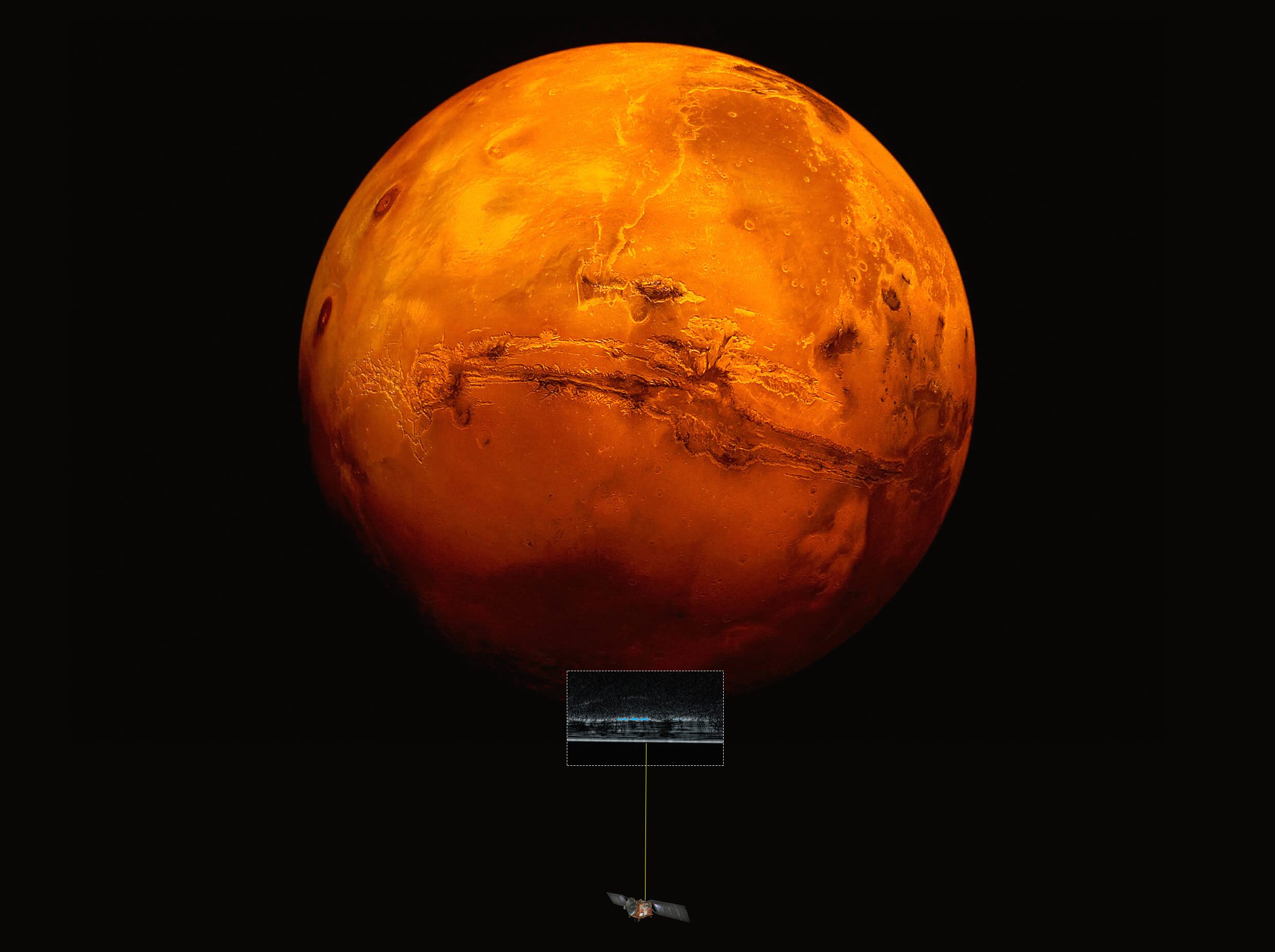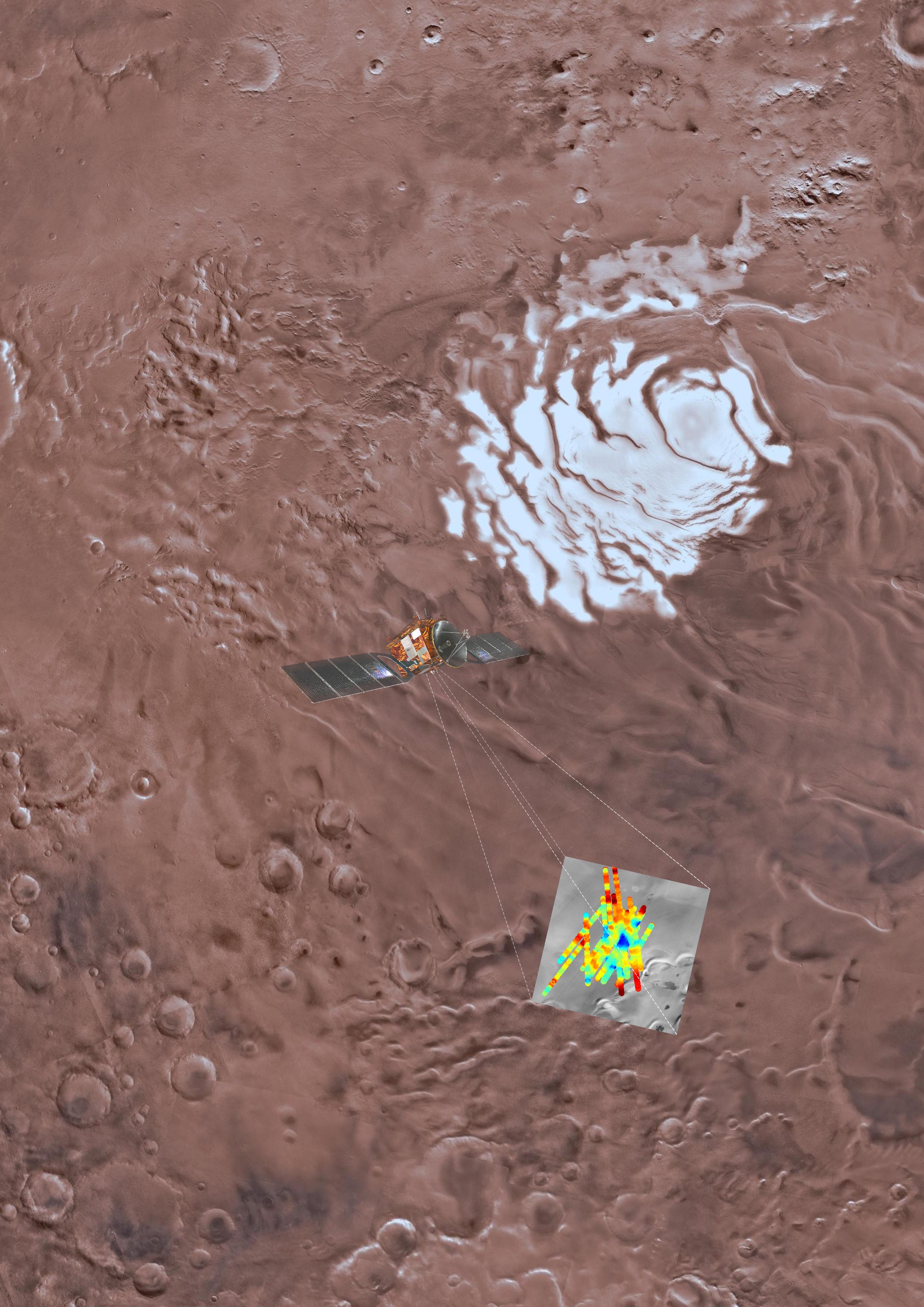Found: Liquid Water on Mars
It’s probably about five times as briny as the Dead Sea.

For decades now, we’ve been searching for water on Mars. We’ve known for good while that it should be there—“No doubt there is water on Mars,” NASA wrote in 1967—we just needed to answer the very big questions of how much there was, what form it took, and where it could be found.
Since then, we’ve found gaseous water in the atmosphere and frozen water on the ice caps, but until now, we’ve never found a body of water in liquid form. In 1987, the astronomer Stephen M. Clifford theorized that liquid water might be hiding, deep below the planet’s polar ice caps. In a new paper published in Science, a European team of researchers reports that they’ve found what seems to be “a stable body of liquid water on Mars,” right where Clifford predicted it’d be.
It’s most likely extremely briny or muddy. It could take years more research to confirm it’s there. But water on Mars is water on Mars—pretty darn cool.
For the past 12 years, a spacecraft-mounted radar called MARSIS has been sending radio waves down to Mars, which reflect back information about the make-up of the planet below. Between 2012 and 2015, MARSIS scanned an area called the Planum Australe on the southern ice cap of Mars. When the team of scientists analyzed the data, they discovered a “very sharp change” in the signals, which resembled the signal of water hidden under the ice sheets of Antarctica and Greenland.
After ruling out other explanations, they believe that the signals could reveal a patch of liquid water, more than 12 miles across and about a mile beneath the ice.

How would this work? It’s terribly cold on Mars, particularly at the poles, but the ice creates an insulating layer so that temperatures further down can actually be warmer. The pressure also changes the melting point of water. One key factor, though, is that this isn’t a font of pure H2O. The analogous Antarctic lakes are chock full of minerals that make them extremely briny—around 200 PSU, or practical salinity units. The Dead Sea, by comparison, clocks in at 40 PSU. The Mars water would have to have a similar make-up to actually be liquid. As National Geographic reports, what the researchers found may be “a deposit of dampened sludge, more like muddy sediments than a pocket filled with liquid.”
The water on Mars, then, is trapped deep under the ice, and you probably wouldn’t want to drink it. (Although opinions may differ on that count.) This isn’t a lovely pool of water that’s going to slake the thirst of Mars colonists in years to come. But it’s a clue to how the terrain of Mars developed and to the planet’s long term climate. It’s also a place where extraterrestrial life could be flourishing. On Earth, places like these are home to bacteria adapted to the extreme conditions of sub-glacial, briny lakes. If there are tiny microbial aliens on Mars, this may be where they live.
There is another satellite orbiting Mars right now, but it hasn’t detected what MARSIS did. It’s less powerful in some ways, although if there were a pool of pure water, it is possible that its instruments could find it. That could mean that the “mucky sludge” explanation is correct; it could mean there’s another explanation entirely. To find out for sure would require a new orbiter to head towards Mars and check the results.












Follow us on Twitter to get the latest on the world's hidden wonders.
Like us on Facebook to get the latest on the world's hidden wonders.
Follow us on Twitter Like us on Facebook